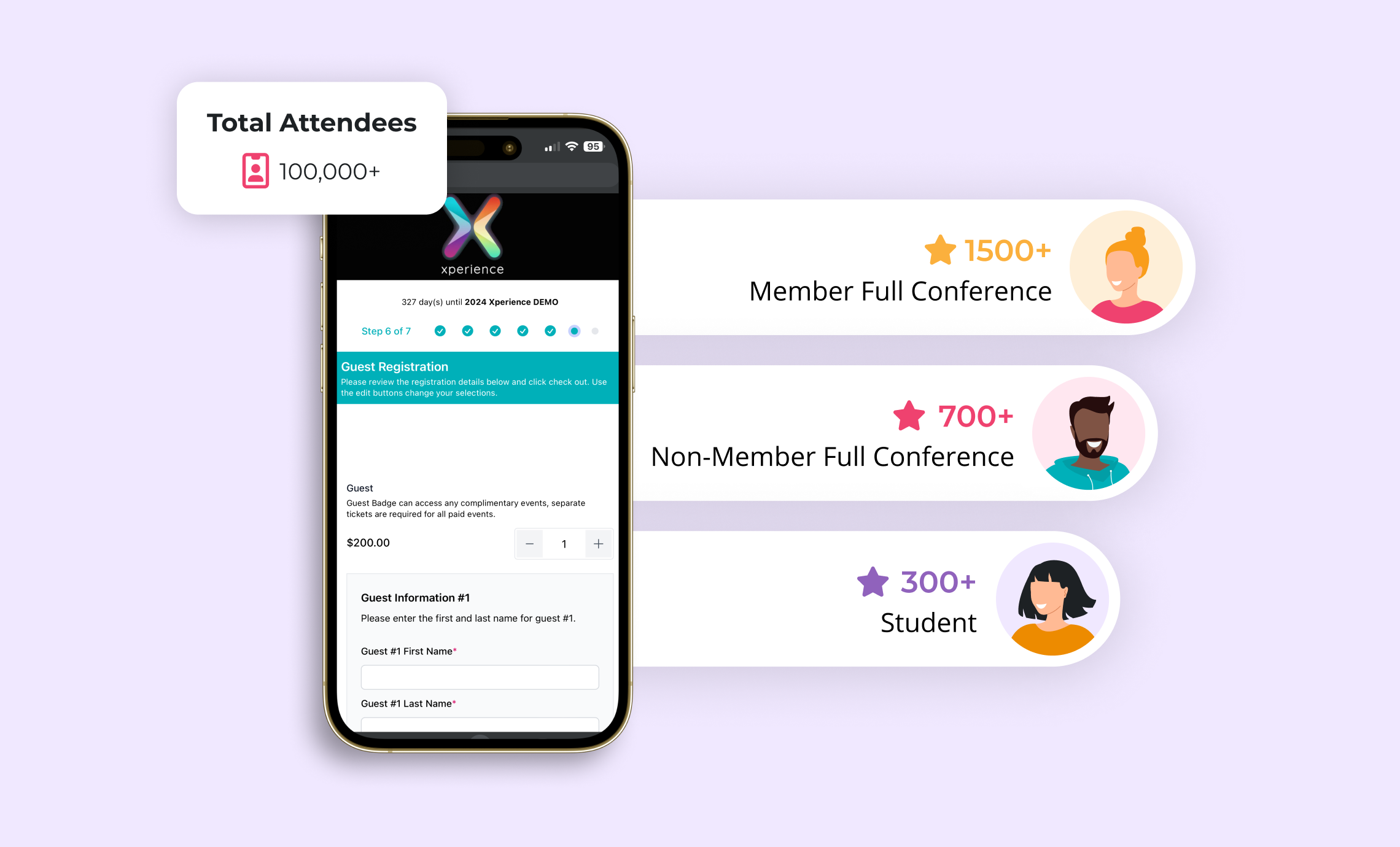Designing an effective booth floor plan is one of the keys to a successful tradeshow. It also helps you attract more attendees, create a positive brand image, and enhance the overall attendee experience. As a result, you better position yourself to maximize event ROI.
Unsure of how to start designing your booth floor plan and booth floor plan, or how to have the best exhibition hall layout, exhibition hall plan, and trade show floor plan design that suit your needs?
Manage a better booth floor plan by checking out our comprehensive guide below.
Understand the venue space
Designing an exhibit hall for your next event can be both exciting and overwhelming. However, if you want a great start toward a successful design process, you must first understand your venue space.
Evaluate the size and layout of the exhibition hall
To avoid wasting resources, you should check the exhibition hall’s size and layout. Determine the square footage, ceiling height, floor layout, and the number of rooms or levels. Doing so will help you determine whether the space is enough, too big, or too small for the event or trade show.
If you find you need bigger or smaller rooms, you can still make some adjustments before investing or putting more effort than necessary into the design process. You should also ensure attendees can conveniently find restrooms, food service areas, and any other pertinent amenities.
Consider any limitations or unique features of the space
Apart from assessing the exhibition hall’s size and layout, consider some limitations or striking features of the space. For example, are there obstructed views?
Where are the electrical outlets? Is their placement safe and convenient? Are there enough to meet the number of attendees?
Be sure to check the fire and safety regulations to ensure compliance and take the necessary precautions to protect attendees’ safety and security. You should also designate specific team members to ensure guidelines and procedures are followed.
Determine the locations of entrances, exits, and other key areas
When designing your exhibitor floor plan or booth floor plan, familiarize yourself with major access points. These include the main entrances and exits, including any emergency exits. The routes should offer attendees a safe, clear, and quick way to evacuate in an emergency.
In addition, make sure the registration desks are visible and easily accessible. Also, check the location of parking areas. They must be safe, close to your venue, and large enough to accommodate all attendees.
Determine your booth requirements
To properly design your booth floor plan, know your booth requirements. These include how big or how many booths you need and whether there are special requests for your booth design.
Identify the number and size of booths needed for your exhibit
To keep your exhibit floor plan organized and help you decide on the right booth spaces, determine the attendees expected at the event and how much of your budget is allocated for the booths.
Consider questions like:
What are your marketing goals?
What type of audience do you want to attract?
How is the availability of booth space?
Answering these questions will help you determine the number and size of booths you need based on the number of attendees and your event goals.
Consider any special requirements or requests for your booth design
An excellent booth floor plan also considers unique requirements affecting your booth design. For example, will there be unique product displays or interactive activities? If so, you’ll probably need larger booth space, or be creative with your booth design in order to maximize space.
You will likely need audio and visual equipment, as well as custom signage that matches your brand’s identity.
Allocate space for storage and demos
A great trade show floor plan provides enough space for storage, product demos, and more. Do not overlook storage for products and equipment, as it’s important to keep everything organized, clean, and secure.
Designate space for product demonstrations to maximize opportunities for exhibitors and sponsors to connect with the right audience and keep them engaged. Consider establishing meeting or lounge areas, depending on your needs, budget, and goals.
Design the layout
Once you’ve evaluated the exhibition hall and established your booth requirements, it’s time to design the layout. This includes traffic flow management, strategic placement of booths and special features, and more.
Determine the flow of traffic through the exhibition hall
A good exhibition hall layout considers where the main traffic routes will be for your booth floor plan. For example, high-traffic areas include places where attendees will network with others or grab something to eat.
Pay attention to meeting points, intersections, and corners as these get a lot of foot traffic. Consider the locations around the hall’s restrooms. Studying the locations of popular exhibits and attractions can also help you ensure a traffic flow that is convenient for attendees and will give all exhibits better exposure.
Place booths strategically to maximize visibility and accessibility on your booth floor plan
To boost your brand’s visibility and ensure accessibility, set up booths near the trade show’s entrances and exits. The entrance may get crowded, but this spot allows you to be the first one that attendees will notice or visit.
Other high-traffic areas include the end of a row, a dead-end, and concession areas. You can also position your booth next to complementary exhibitors for better organization. Moreover, you should place your booths on the right side as many people usually approach venues similar to how they drive cars.
Consider the placement of special features or attractions
An effective exhibition hall plan also incorporates unique features into the design. For example, the keynote speakers and stages should offer attendees a clear and unobstructed view.
Moreover, the food and beverage areas must be accessible for all attendees and should be hygienic, safe, and secure. For product demonstration areas, make sure the attendees can conveniently engage with you and your brand.
Ensure adequate space for aisles and walkways
A trade show floor plan design should ensure compliance with the American Disabilities Act, or ADA. This means that the area for aisles, walkways, and other areas should have enough space for attendees with wheelchairs or strollers. As much as possible, avoid congestion and bottlenecks by spacing things out, setting up booths in quads, and keeping the aisles between booths wide enough.
Collaborate with other exhibitors and the venue
Designing an exhibit floor plan also requires a collaborative effort between complementary exhibitors. This includes respecting other exhibitors’ displays and booth spaces, and providing a unified brand experience. Smooth coordination with other exhibitors prevents conflicts and helps ensure the event’s success.
Communicate with the venue to foster adherence to rules and regulations. Know the electrical and utility requirements, fire and safety regulations, and load-in and load-out procedures to promote efficiency and security.
Reserve any necessary services or equipment to promptly address exhibitors’ and attendees’ needs. These include audio and visual equipment, furniture and decor, along with electrical, plumbing, and internet access.
Refine the design
Test and refine your trade show floor plan design by using software programs. You can also create physical mockups of the exhibit space. Depending on your needs and other factors, you can adjust the booths’ placement and size.
If necessary, you can also make adjustments to the flow of traffic throughout the exhibition hall for efficiency and convenience. You can also change the location of unique features or attractions.
Feedback from exhibitors, colleagues, and attendees can help improve your current and future events, which is why you should prepare feedback surveys for attendees and invite the input of exhibitors regarding the floor plan design. These insights will help you evaluate your marketing success and, ideally, enhance your ROI.


